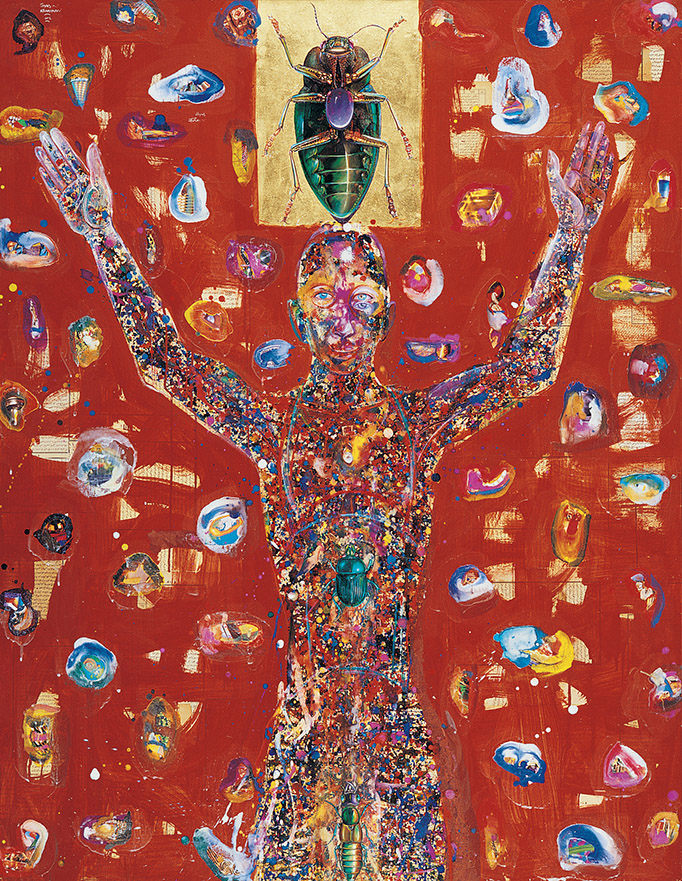- Open Today: 10.00–18.00
- Ticket
- Shop
- Membership
- TR EN

Ergin İnan, 1943
Human III, 2002
Ergin İnan graduated from the İstanbul Faculty of Law in 1963 and studied in the upper division of the State School of Applied and Fine Arts in 1964-1968.
Ergin İnan’s works are reflections of the artist’s visual memory which take the form of bodies that are as fluid as water and leave in their wake the flavor of a fleeting image; of overlapping, compound-perspective faces and eyes that point to different spiritual states; of a love of nature that transforms the mystery of the microcosm into a visual atlas; of the plastic structure of books of astrological and oracular pronouncements, charms, seals, and calligraphy; of occult powers that are attributed to appendages such as hands and feet. His art is nourished by a visual and intellectual energy radiated by cultures joined together like the links in a chain. Although his works are suffused with the atmosphere of the East, as he delves into the mystic rituals of Central Asia, Ergin İnan also explores the West’s language of rational and critical form. He juxtaposes the notions of love, light, body, and faith in Mevlana’s “Mesnevi” with an existentialist effort to understand and give meaning to life. Another compelling intellectual conundrum that he explores through his painting is how the world was created. His approach respects the complex and multifaceted nature of history, and exposes both the body and mind to the cultural and intellectual values of an existential world. This is why the human body, which provides the backbone of Ergin İnan’s art, acts as a signpost pointing to the human relationship with the infinity that is at the core of everything. In some cases, the bodies of artist’s figures are stretched to the breaking-point and reference a non-portrayable, non-existent content that corresponds to no explicit subject.
Painting
Mixed media on canvas
Istanbul Museum of Modern Art Collection
Oya – Bülent Eczacıbaşı Donation